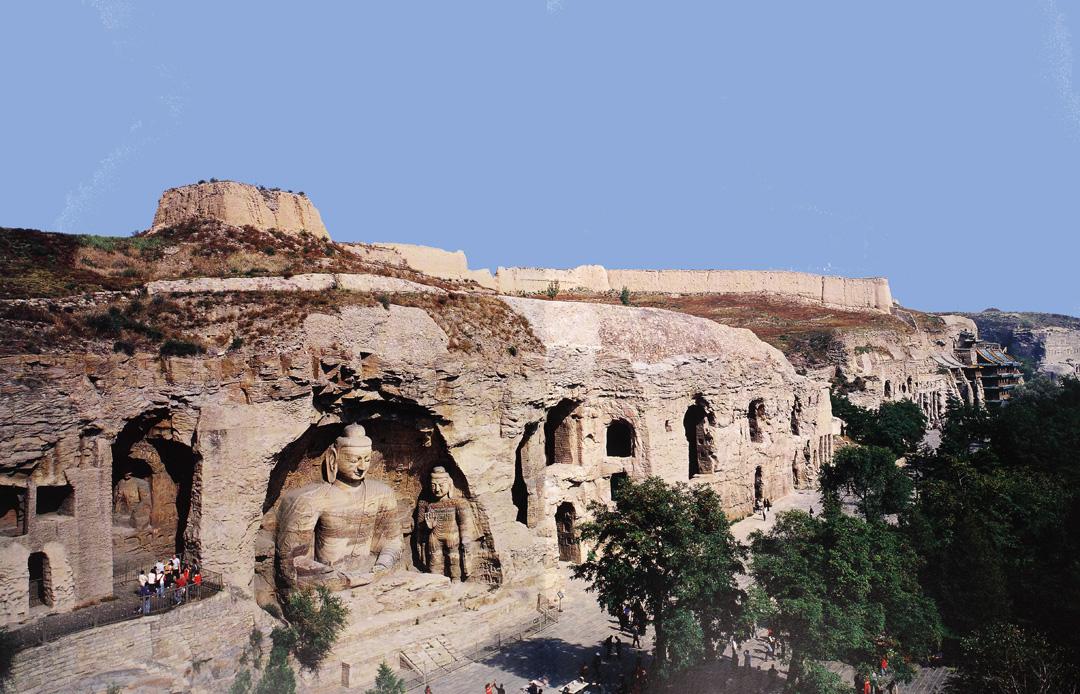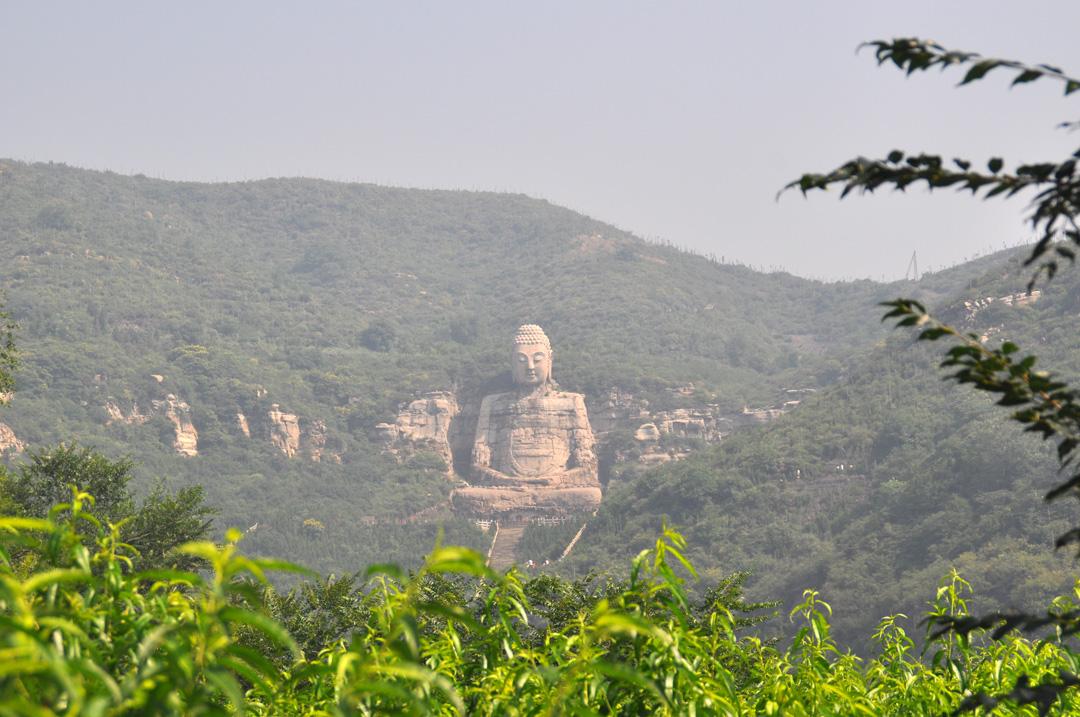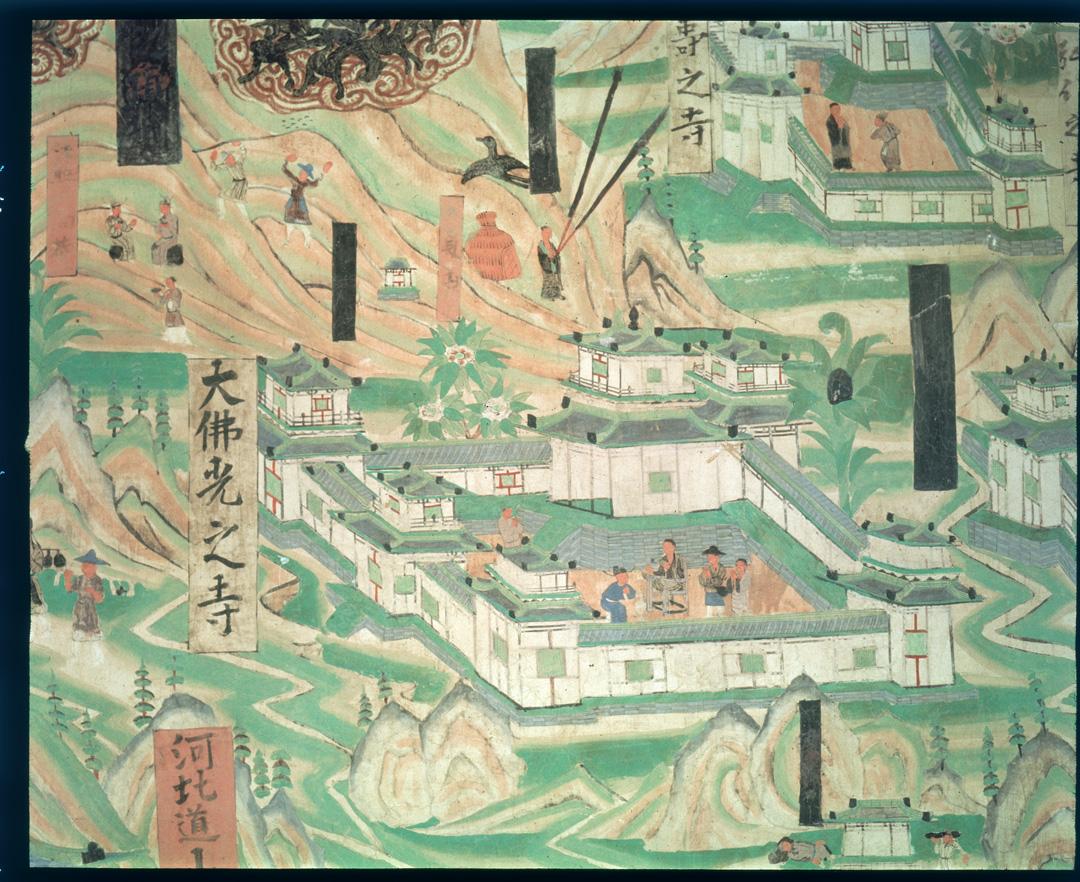Building a Sacred Mountain
IMAGES

Bird’s-eye view of the caves at Yungang, Shanxi, with the colossal Buddha of Cave 20 in the foreground. 460s–480s CE. From Yungang Shiku Yanjiuyuan, Yungang shiku, 87–88. Photograph by permission of Wenwu Press.

South interior wall of Cave 5, Yungang. 486–495 CE. The twin Buddhas, Sakyamuni and Prabhutaratna, can be seen in a small niche in the sidewall of the window above the arched entryway, and the two monks meditating under a tree are just below, on the sidewall of the entryway. From Yungang Shiku Wenwu Baoguansuo, Yungang shiku, vol. 1, pl. 42. Photograph by permission of Wenwu Press.

Sitting colossal Buddha carved out of rock at the former Kaihua Monastery, Mount Meng, Taiyuan, Shanxi. After 551 CE. The height of the sitting body of the Buddha measures approximately 30 meters. The original head had long been missing and was replaced in 2008 with a concrete one, 12 meters high. Photograph courtesy of Jungmin Ha.

The current monastic buildings at the site of the former Huayan Monastery on the rising hill. From Guo Zhicheng, “Wutai Shan,” fig. 1. Photograph courtesy of Guo Zhicheng.

Detail of Foguang Monastery in the mural depicting the panorama of Mount Wutai on the west wall of Mogao Cave 61, Dunhuang, Gansu. Mid-10th century ce. From Dunhuang Wenwu Yanjiusuo, Dunhuang Mogaoku, vol. 5, pl. 52. Photographby permissionof Wenwu Press.

Site of the former Monastery of Great Faith in Vulture Peak (Dafu Lingjiusi), named after the hill Vulture Peak, on which the monastery was built. The monastery was renamed Great Huayan Monastery (Da Huayansi) in the early 700s CE. During the Ming dynasty, its components were separated into several individual monasteries, which continue into modern times. Photograph courtesy of Guo Zhicheng.

The “true-presence” (zhenrong) icon of Mañjuśrī riding a lion. Painted white marble. Mid-8th century. Shanxi Provincial Museum. Photograph by author.